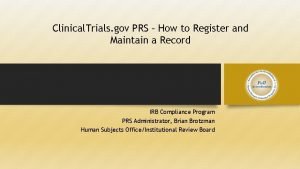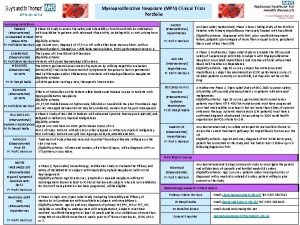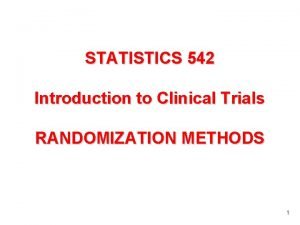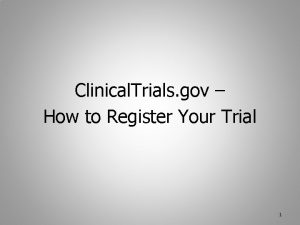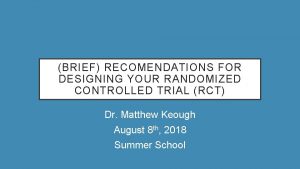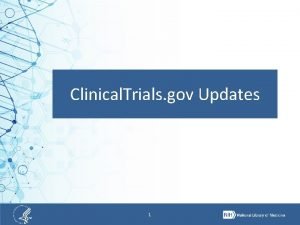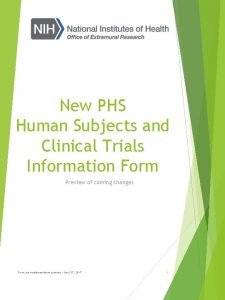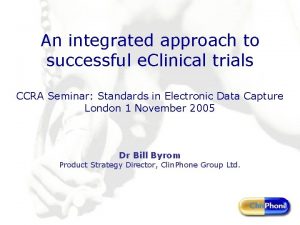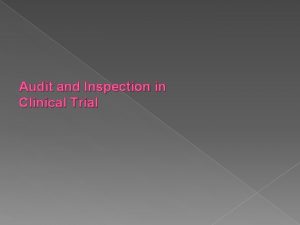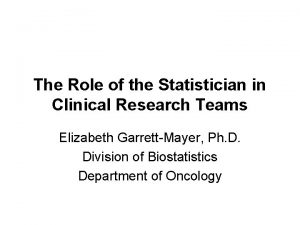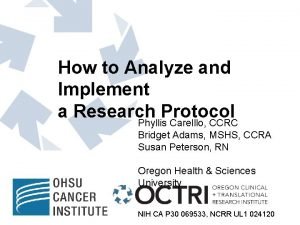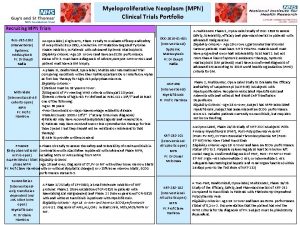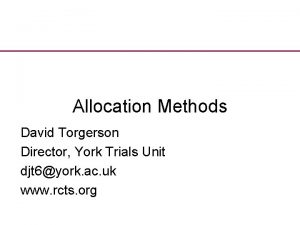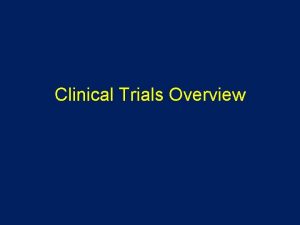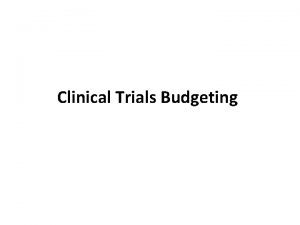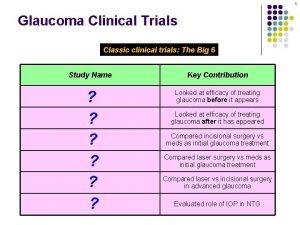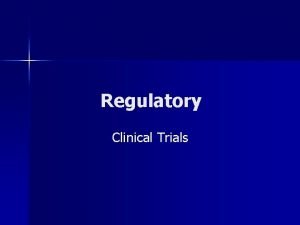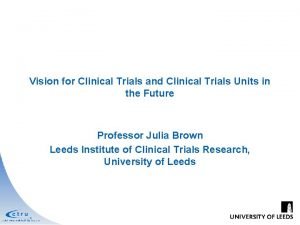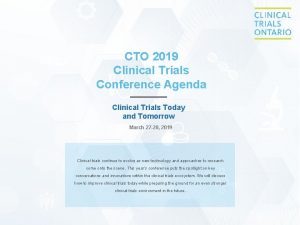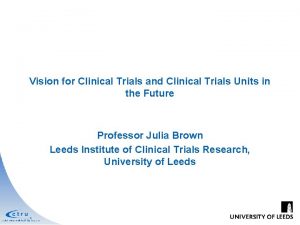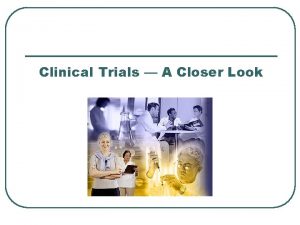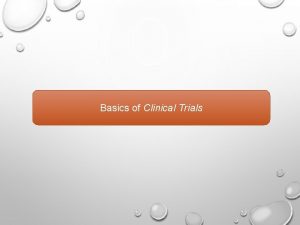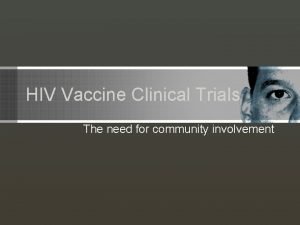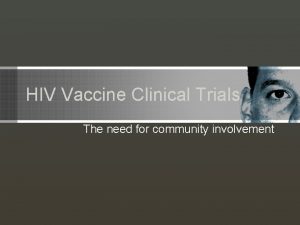Expanding Community Engagement in HIV Clinical Trials A















- Slides: 15


Expanding Community Engagement in HIV Clinical Trials: A Pilot Study Using Crowdsourcing Suzanne Day July 22, 2019

Engagement Recommendations UNAIDS/AVAC Good Participatory Practice Guidelines, 2011: • Community advisory boards (CABs) are a key engagement strategy for HIV clinical trials • CAB feedback should be complimented by “other advisory mechanisms”

ACCESS: The Acceptability of Combined Community Engagement Strategies Study Goal: to conduct both CAB and crowdsourcing community engagement for a phase 1 HIV clinical trial, and compare the resulting feedback. 1. Community Advisory Board (CAB) A group of community representatives providing feedback to research teams. 2. Crowdsourcing Inviting community members to come together to solve a problem, then sharing the exceptional solution(s) with the public.

The Clinical Trial Context • VOR-07 study: a phase 1 trial examining the safety and effectiveness of taking an antibody followed by vorinostat • PI: Dr. Cindy Gay at UNC Chapel Hill • Starting to enroll participants NOTE: ACCESS did not replace VOR-07’s engagement practices (CAB review/discussion)

Feedback on Three Trial Aspects 1. Informed consent 2. Participation processes 3. Issues of fairness and reciprocity in HIV clinical trials CAB & Crowdsourci ng Engagement Activities

CAB Engagement Activities 1. Informed consent Group discussion on clarity, completeness & format of trial informed consent form 2. Trial participation process Group discussion of three fictional vignettes depicting trial experiences (e. g. barriers/facilitators to participation) 3. Fairness & reciprocity Group discussion on ways that clinical trial researchers can ‘give back’ to community

• • Crowdsourcing Activity 1: Informed Consent Trial consent form adapted into narrated, interactive video modules Modules screened at open public event, followed by guided discussion Module screenshots courtesy of Community Expert Solutions

• • Crowdsourcing Activity 2: Trial Participation Vignettes adapted into three short animated videos Videos screened at open public event, followed by guided discussion Animation screenshots courtesy of Community Expert Solutions

Crowdsourcing Activity 3: Fairness & Reciprocity • Idea contest, open to the public with online and in-person submission opportunities. • Entries judged by panel; winning ideas awarded prizes & celebrated.

Differences in CAB & Crowdsourcing Demographics CAB Participants (N = 9) Ø Higher education levels; 67% held Masters degrees. Ø Higher employment; 44% employed. Ø Higher income; 56% reported annual income of $50, 000 to $74, 999. Crowdsourcing Participants (N = 38) Ø Lower education levels; 34% reported high school/equivalent as highest education level, 10. 5% did not complete high school. Ø Lower employment; 7% employed. Ø Lower income; 47% reported annual income of $10, 000 or less.

Overlap in CAB & Crowdsourced Feedback Similar ideas to improve trial communication • E. g. alternative ways to deliver informed consent (i. Pad, video). Similar ideas to improve supports for trial participants • E. g. supporting participants’ partners/family; offering links to psychosocial resources.

Divergences in CAB & Crowdsourced Feedback CAB feedback emphasized: • the impact of institutional regulation • the value of tailoring trial processes Crowdsourced feedback emphasized • alternative strategies for recruitmen • potential risks of trial participation • incommensurate compensation

Conclusions Crowdsourcing is a promising strategy for meeting GPP recommendations. • Combining CAB engagement with crowdsourcing can reach a broader range of stakeholders to inform HIV clinical trials. • Crowdsourced feedback can both complement and extend CAB feedback on HIV clinical trials.

Acknowledgements Thank you to all CAB and crowdsourcing participants for sharing your ideas and making ACCESS possible. Funding: National Institutes of Health Research (NIAID project numbers 5 R 01 A 108366 and 1 K 24 AI 143471) Contact Info: Suzanne Day suzanne. day@med. unc. ed u searchiv. web. unc. edu ACCESS Team Joseph D. Tucker (Co-PI) Stuart Rennie (Co-PI) Allison Mathews (Community Expert Solutions) Thi Vu (Research Assistant) Meredith Blumberg (Research Assistant) Hailey Mason (Research Assistant) VOR-07 Partners Cindy Gay (PI) Jo. Ann Kuruc (Co-I) David Margolis (Co-I) UNC Center for AIDS Research (CFAR)
 Hawk irb
Hawk irb Site initiation visit
Site initiation visit Mpn clinical trials
Mpn clinical trials Randomization
Randomization Clinical trials.gov login
Clinical trials.gov login Clinical trials
Clinical trials Clinicaltrails.gov api
Clinicaltrails.gov api Lej hub customs dhl
Lej hub customs dhl Phs human subjects and clinical trials information
Phs human subjects and clinical trials information Ivr iwr studies
Ivr iwr studies Audits and inspections of clinical trials
Audits and inspections of clinical trials Role of statistician in clinical trials
Role of statistician in clinical trials Readyset ohsu
Readyset ohsu Clinical hysteria salem witch trials
Clinical hysteria salem witch trials Mpn clinical trials
Mpn clinical trials York trials unit
York trials unit
